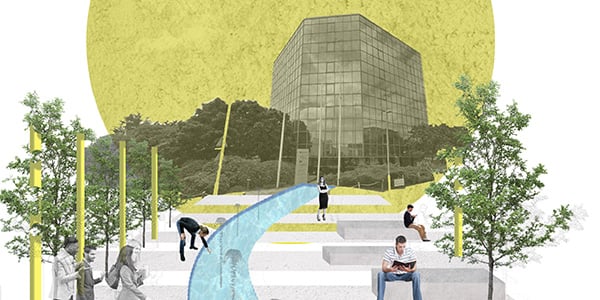
From the definition of ‘reinvent’ in interior design, to its impact on society and the environment, here’s all you need to know about this responsible interior design concept.
What is the definition of ‘reinvent’ in interior design?
In interior design, the concept of ‘reinventing’ means taking what is existing and reforming it to what will be, changing something so much that it appears new. Reinventing typically involves an interior designer making significant changes or alterations to a space to transform its functionality or overall design aesthetic.
This can include modifying layouts, reimagining lighting, updating colour schemes, changing furniture, switching décor and fabrics used, or in fact, incorporating any new design elements to breathe new life into an old space.
Ultimately, it's about innovation within the design process to rejuvenate and enhance a space in a way that aligns with the desired objective and vision for the project. This is not only a sustainable design tool that benefits the environment, but by re-purposing and stripping back for re-use and reinvention, this in turn helps society deal with the housing shortage.
Why destroy or leave an empty old place of occupancy when you can reinvent?
How does reinvention challenge interior design ideas
Reinvention challenges interior design ideas by pushing designers to think outside the box and try out new, creative and innovative ideas on existing spaces. Whether they mix up the materials used, play around with different layouts or experiment with a completely different colour palette, the reinvention process is all about giving spaces a complete transformation.
Interior designers are not only forced to think differently when reinventing spaces, but they must remember to consider how people will interact with the space, and how society and culture changing will impact the space. These exciting challenges can be studied in more depth in the reinvention module of our online MA Interior Design.
The role of responsive interiors
Designing for reinvention is a nuanced process that fits under the category of responsive interiors, specifically known as interventions.
These interventions, outlined by Brooker and Stone, provide a structured approach to transforming existing spaces. The three distinct categories within responsive interiors –Intervened, Inserted, and Installed – serve as guiding principles for designers seeking to reinvent spaces.
Intervened interiors involve a thorough alteration of the existing building, with designers revealing and translating its qualities into the new design.
Inserted interiors establish a close relationship by introducing a distinctive element into the existing space, often in contrast to the building's original language.
Installed interiors, on the other hand, allow coexistence without altering the structure, reacting to the existing space.
Embracing these categories empowers designers to navigate the complexities of reinvention, offering a framework that balances innovation, functionality, and a profound understanding of the original space's character.
The impact of reinvention
Reinvention isn't just an exciting concept for interior designers to implement in their work; it has extensive repercussions for both the environment and the shortages in housing and commercial office spaces.
The impact of reinvention on the environment
The most significant impact of reinvention on the environment is the fact that existing spaces are being utilised and transformed, reducing the need for new and discouraging the ‘disposable culture’ often associated with unsustainable interior design.
Additionally, interior designers in this modern day and age have much more of an awareness of the impact unsustainable interior design can have on the environment.
Powered by this knowledge, interior designers can reinvent spaces with longevity in mind. They can prioritise energy-efficient design and the use of preloved or upcycled materials to lessen their carbon footprint. The impact of reinvention on housing shortages and commercial office spaces
Similarly to the impact on the environment, reinvention in interior design can help tackle housing shortages and repurpose commercial office spaces. Reinvention encourages interior designers to repurpose existing structures and unused spaces, transforming them into exciting new spaces for people to use and inhabit.
This sort of creative and innovative thinking utilises resources more effectively, bringing new life to older structures that might otherwise contribute to urban decay.
How the ‘Reinvent’ module of the online MA Interior Design will help you explore this concept
Our part-time, fully online MA Interior Design has a whole module dedicated to the concept of reinvention. This course is designed to blend research and practice with creative theory.
Throughout the two years, you will explore topics such as collaboration, experience, transition, inclusivity, and diversity – and you’ll learn how to translate these points into interior design solutions that spearhead an inspiring, sustainable existence:
Featured image credit: Sofie Asplin
Related posts
Passivhaus: The gold standard in energy efficiency
Learn more about Passivhaus-standard building and what criteria constructors need to meet to be...
Read the storyInterior design in educational spaces
Discover how interior design plays a role in educational spaces and the learning experience.
Read the storyHow to become a freelance interior designer
Turn your interior design passion into a freelance career. From portfolios to rates, here's all you...
Read the storyStart your creative journey here.
Want to chat or ask a few questions? Fill this in and we’ll give you a call back.
